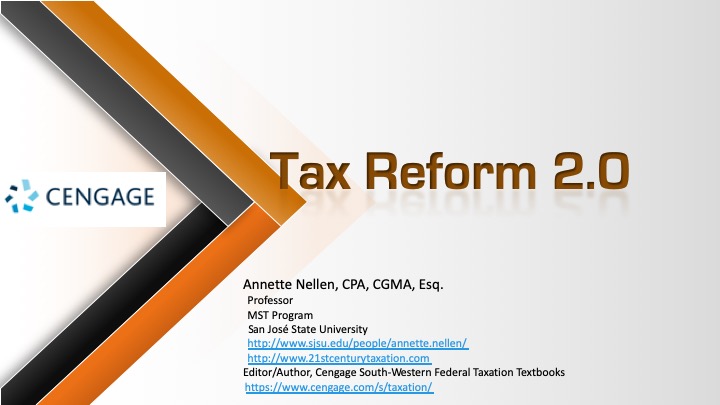Tax Reform 2.0

Soon after the enactment of the Tax Cuts and Jobs Act in December 2017, there was talk of Tax Reform 2.0. This included technical corrections and provisions that expired at the end of 2017, plus some TCJA items expiring this year. Politics today defines temporary and permanent—the upcoming 2020 elections are already introducing tax proposals such as TCJA repeal, a wealth tax, carbon tax and more. This presentation covers what was left out of TCJA due to the enactment process, key reform proposals, how to identify what reforms are needed based on trends, and how to evaluate proposals using principles of good tax policy. Topics include definitions of Tax Reform 2.0, how trends, budget deficits and debt could shape further reform, tips for evaluating proposals and more.
Learning objectives:
1) Explain what led to TCJA and why certain reforms were omitted including permanence and AMT repeal
2) Understand budget issues and trends that should be considered in ongoing reform discussions and why
3) Be able to evaluate proposals and existing rules using principles of good tax policy
Learning objectives:
1) Explain what led to TCJA and why certain reforms were omitted including permanence and AMT repeal
2) Understand budget issues and trends that should be considered in ongoing reform discussions and why
3) Be able to evaluate proposals and existing rules using principles of good tax policy

